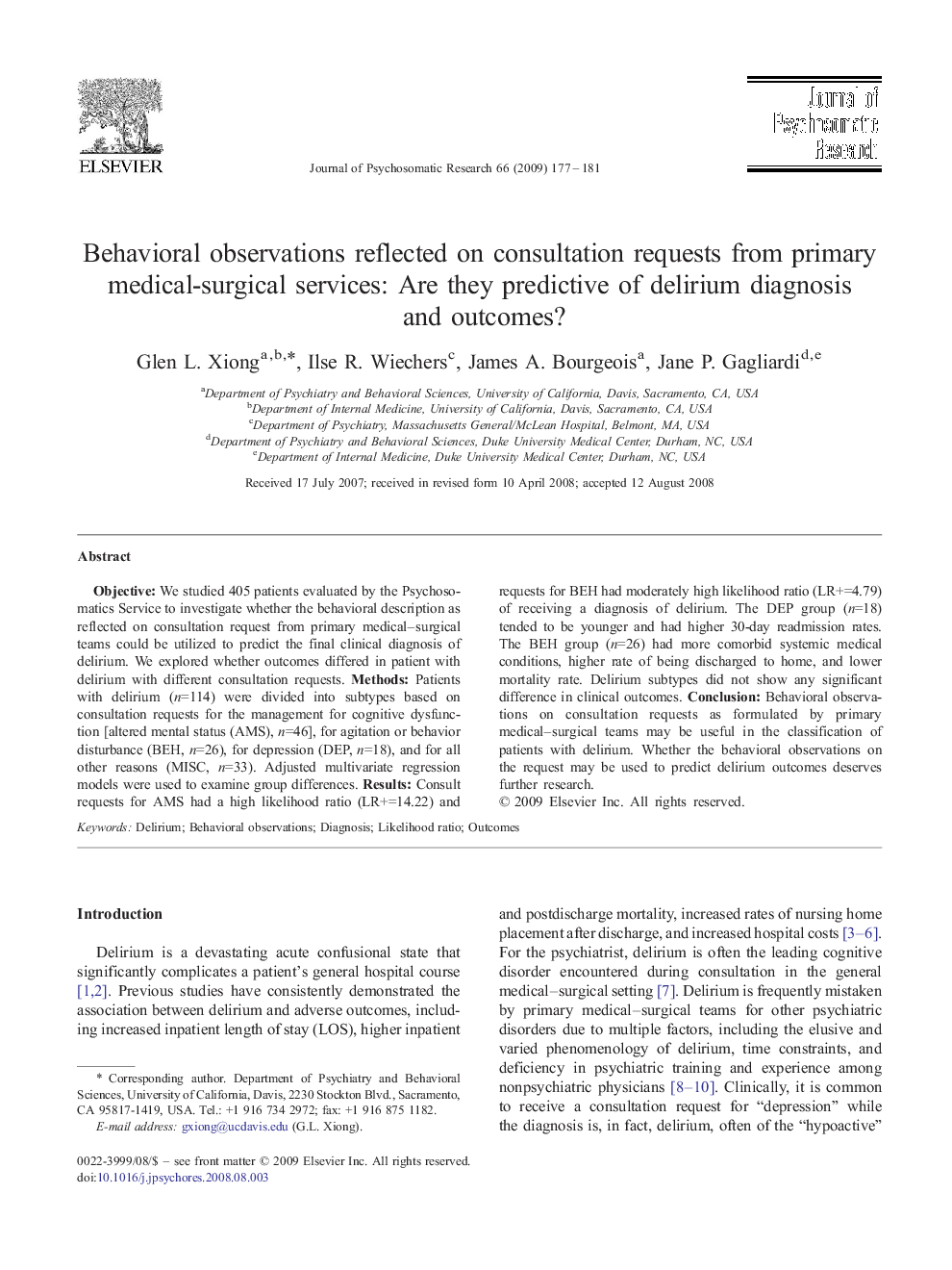| Article ID | Journal | Published Year | Pages | File Type |
|---|---|---|---|---|
| 951014 | Journal of Psychosomatic Research | 2009 | 5 Pages |
ObjectiveWe studied 405 patients evaluated by the Psychosomatics Service to investigate whether the behavioral description as reflected on consultation request from primary medical–surgical teams could be utilized to predict the final clinical diagnosis of delirium. We explored whether outcomes differed in patient with delirium with different consultation requests.MethodsPatients with delirium (n=114) were divided into subtypes based on consultation requests for the management for cognitive dysfunction [altered mental status (AMS), n=46], for agitation or behavior disturbance (BEH, n=26), for depression (DEP, n=18), and for all other reasons (MISC, n=33). Adjusted multivariate regression models were used to examine group differences.ResultsConsult requests for AMS had a high likelihood ratio (LR+=14.22) and requests for BEH had moderately high likelihood ratio (LR+=4.79) of receiving a diagnosis of delirium. The DEP group (n=18) tended to be younger and had higher 30-day readmission rates. The BEH group (n=26) had more comorbid systemic medical conditions, higher rate of being discharged to home, and lower mortality rate. Delirium subtypes did not show any significant difference in clinical outcomes.ConclusionBehavioral observations on consultation requests as formulated by primary medical–surgical teams may be useful in the classification of patients with delirium. Whether the behavioral observations on the request may be used to predict delirium outcomes deserves further research.
